Do you have a question about the Black Box LES1532A and is the answer not in the manual?
Provides an overview of the console server features and information on this manual.
Lists the chapters contained within the manual.
Describes how to install the console server hardware and connect it to controlled devices.
Lists console server models with their serial, USB, network, console ports, modem, RJ pinout, power, and memory.
Lists the components included in the LES1508A Console Server kit.
Lists the components included in the LES1308A/LES1348A and LES1408A/LES1448A kits.
Outlines initial configuration steps for the console server and connecting to the network.
Guides on connecting a PC or workstation to the console server for initial configuration.
Details setting up the IP address for a connected PC or workstation to configure the console server.
Guides on accessing the Management Console via a web browser using the console server's IP address.
Introduces configuring access and control for serially attached and network attached devices.
Guides on setting up protocols and RS-232 parameters for data connection to serial ports.
Describes common settings for serial ports, independent of their mode.
Enables remote management access to serial consoles attached to serial ports.
Describes out-of-band access capabilities and failover features for high availability.
Ensures a modem is attached to the console server for dial-in or dial-out access.
Guides on configuring the console server for dial-in PPP access and awaiting connections.
Details enabling dial-in PPP access on the modem and configuring settings.
Introduces secure SSH tunneling for remote access to managed devices and SDT Connector.
Guides on setting up SSH tunnel access to network attached hosts.
Explains how SDT Connector works with console servers for port forwarding and access.
Guides on installing the SDT Connector setup program on Windows and Linux clients.
Describes automated response, alert generation, and logging features of the console server.
Guides on configuring auto-response by setting general parameters, check conditions, and trigger actions.
Explains configuring conditions that trigger Auto-Response, such as UPS status or ICMP ping.
Configures the sequence of actions to be taken when a trigger condition is met.
Introduces managing Power Distribution Systems (PDUs), IPMI devices, and UPSs.
Monitors and controls RPC devices using PowerMan, Network UPS Tools, and Black Box software.
Guides on connecting and configuring serial and network-connected RPCs to the console server.
Explains configuring console servers to manage locally and remotely connected UPS hardware using NUT.
Covers user authentication methods including PAM, OpenSSH, and SSL for secure access.
Explains configuring authentication locally or remotely using LDAP, RADIUS, or TACACS+.
Guides on selecting Local authentication and applying the settings.
Explains configuring TACACS+ authentication method for console server and serial ports access.
Introduces Nagios as an open-source tool for monitoring network hosts and services.
Explains how console servers operate with Nagios for distributed monitoring.
Provides a background on Nagios, its capabilities, and how to use it for monitoring.
Outlines the Black Box Nagios solution components: Central Nagios server, distributed console servers, and SDT software.
Describes console server system administration and configuration tasks like resets and firmware upgrades.
Explains how administrators can reboot or reset the gateway to default settings.
Guides on upgrading console server firmware, ensuring the latest version is running.
Recommends setting local date and time, and configuring NTP for system time synchronization.
Describes the dashboard feature and available status reports like Port Access and Statistics.
Allows administrators to see users with access privileges to serial ports and active sessions.
Provides a snapshot of the console server's status, traffic, and activities.
Offers useful status information to assist technical support in solving problems.
Introduces Manage reports and tools for administrators and users to access devices.
Displays managed devices and their associated serial, network, and power connections.
Allows administrators and users to view logs of data transfers to connected devices.
Provides two methods for accessing console server command line and attached devices via web browser.
Describes using command line access and the config tool to manage the console server and ports.
Guides on accessing the config command line tool for console server configuration.
Covers first set of configurations for serial ports, including RS-232 common settings.
Guides on adding and removing users, assigning them to groups, and configuring port access.
Describes console server configuration using Linux commands and various tools.
Explains running custom bash shell scripts for automating tasks like booting and alerts.
Guides on creating custom scripts in /etc/config/rc.local to run at system boot.
Details running default or custom scripts when specific alerts are triggered.
Introduces console server platform as a Linux computer for monitoring and secure access.
Lists standard uCLinux and BusyBox commands and custom Black Box commands.
Explains IPMItool utility for managing and configuring Intelligent Platform Management Interface devices.
Offers a development kit for making changes to console server firmware image and custom scripts.
Lists hardware specifications including dimensions, weight, operating temperature, and memory.
Provides safety precautions regarding metal covers, power cords, and electrical storms.
States FCC compliance with Part 15 rules and operation conditions.
Explains the symbol on the product regarding waste disposal and recycling.
Details pin-out standards for DB9 and DB25 connectors, and RJ45 connectors.
Describes straight RJ-45 to equipment like Cisco, Juniper, SUN.
Explains connecting to LOCAL modem/console port using DB9 or RJ-45 adapters with UTP Cat 5 cable.
Tables RS-232 pinout standards for DB9 and DB25 connectors with signal definitions.
Explains TCP/UDP port number ranges and shows well-known port numbers.
Details software-selectable RS-232, RS-422, or RS-485 serial port pinouts for LES1508A.
Details RS232 ports on LES1102A and software-selectable RS485/RS422 ports with screw terminal block.
Details DB9 serial port pinouts for LES1101A-R2, configurable for RS232, RS485, or RS422.
Provides definitions for terms like 3G, AES, APN, Authentication, BIOS, and Bonding.
Defines terms like DNS, DUN, Encryption, Ethernet, Firewall, Gateway, Hub, Internet, and Intranet.
Defines terms like NFS, NTP, OUT OF BAND, PAP, PPP, RADIUS, Router, SIM, SMASH, SMTP, SOL, SSH, SSL, TACACS+.
Presents terms and conditions for using the accompanying software product.
Grants a nonexclusive license to install and use the Software on a single CPU.
States that Software is protected by copyright and intellectual property laws.
Agrees not to export or re-export Software in violation of applicable laws.
Explains that EULA terminates immediately upon failure to comply with terms.
States EULA is governed by Utah laws and prevailing party is entitled to costs.
Mentions SDT Connector includes code from JSch licensed under BSD style license.
Provides the GNU GENERAL PUBLIC LICENSE Version 2 terms and conditions.
Details terms for copying, distribution, and modification of the Program under the License.
Disclaims all warranties, expressed or implied, for the Software.
Limits liability for damages, including lost profits or data.
Introduces Black Box Network Services as a source for networking products with 24/7 tech support.
Provides an overview of the console server features and information on this manual.
Lists the chapters contained within the manual.
Describes how to install the console server hardware and connect it to controlled devices.
Lists console server models with their serial, USB, network, console ports, modem, RJ pinout, power, and memory.
Lists the components included in the LES1508A Console Server kit.
Lists the components included in the LES1308A/LES1348A and LES1408A/LES1448A kits.
Outlines initial configuration steps for the console server and connecting to the network.
Guides on connecting a PC or workstation to the console server for initial configuration.
Details setting up the IP address for a connected PC or workstation to configure the console server.
Guides on accessing the Management Console via a web browser using the console server's IP address.
Introduces configuring access and control for serially attached and network attached devices.
Guides on setting up protocols and RS-232 parameters for data connection to serial ports.
Describes common settings for serial ports, independent of their mode.
Enables remote management access to serial consoles attached to serial ports.
Describes out-of-band access capabilities and failover features for high availability.
Ensures a modem is attached to the console server for dial-in or dial-out access.
Guides on configuring the console server for dial-in PPP access and awaiting connections.
Details enabling dial-in PPP access on the modem and configuring settings.
Introduces secure SSH tunneling for remote access to managed devices and SDT Connector.
Guides on setting up SSH tunnel access to network attached hosts.
Explains how SDT Connector works with console servers for port forwarding and access.
Guides on installing the SDT Connector setup program on Windows and Linux clients.
Describes automated response, alert generation, and logging features of the console server.
Guides on configuring auto-response by setting general parameters, check conditions, and trigger actions.
Explains configuring conditions that trigger Auto-Response, such as UPS status or ICMP ping.
Configures the sequence of actions to be taken when a trigger condition is met.
Introduces managing Power Distribution Systems (PDUs), IPMI devices, and UPSs.
Monitors and controls RPC devices using PowerMan, Network UPS Tools, and Black Box software.
Guides on connecting and configuring serial and network-connected RPCs to the console server.
Explains configuring console servers to manage locally and remotely connected UPS hardware using NUT.
Covers user authentication methods including PAM, OpenSSH, and SSL for secure access.
Explains configuring authentication locally or remotely using LDAP, RADIUS, or TACACS+.
Guides on selecting Local authentication and applying the settings.
Explains configuring TACACS+ authentication method for console server and serial ports access.
Introduces Nagios as an open-source tool for monitoring network hosts and services.
Explains how console servers operate with Nagios for distributed monitoring.
Provides a background on Nagios, its capabilities, and how to use it for monitoring.
Outlines the Black Box Nagios solution components: Central Nagios server, distributed console servers, and SDT software.
Describes console server system administration and configuration tasks like resets and firmware upgrades.
Explains how administrators can reboot or reset the gateway to default settings.
Guides on upgrading console server firmware, ensuring the latest version is running.
Recommends setting local date and time, and configuring NTP for system time synchronization.
Describes the dashboard feature and available status reports like Port Access and Statistics.
Allows administrators to see users with access privileges to serial ports and active sessions.
Provides a snapshot of the console server's status, traffic, and activities.
Offers useful status information to assist technical support in solving problems.
Introduces Manage reports and tools for administrators and users to access devices.
Displays managed devices and their associated serial, network, and power connections.
Allows administrators and users to view logs of data transfers to connected devices.
Provides two methods for accessing console server command line and attached devices via web browser.
Describes using command line access and the config tool to manage the console server and ports.
Guides on accessing the config command line tool for console server configuration.
Covers first set of configurations for serial ports, including RS-232 common settings.
Guides on adding and removing users, assigning them to groups, and configuring port access.
Describes console server configuration using Linux commands and various tools.
Explains running custom bash shell scripts for automating tasks like booting and alerts.
Guides on creating custom scripts in /etc/config/rc.local to run at system boot.
Details running default or custom scripts when specific alerts are triggered.
Introduces console server platform as a Linux computer for monitoring and secure access.
Lists standard uCLinux and BusyBox commands and custom Black Box commands.
Explains IPMItool utility for managing and configuring Intelligent Platform Management Interface devices.
Offers a development kit for making changes to console server firmware image and custom scripts.
Lists hardware specifications including dimensions, weight, operating temperature, and memory.
Provides safety precautions regarding metal covers, power cords, and electrical storms.
States FCC compliance with Part 15 rules and operation conditions.
Explains the symbol on the product regarding waste disposal and recycling.
Details pin-out standards for DB9 and DB25 connectors, and RJ45 connectors.
Describes straight RJ-45 to equipment like Cisco, Juniper, SUN.
Explains connecting to LOCAL modem/console port using DB9 or RJ-45 adapters with UTP Cat 5 cable.
Tables RS-232 pinout standards for DB9 and DB25 connectors with signal definitions.
Explains TCP/UDP port number ranges and shows well-known port numbers.
Details software-selectable RS-232, RS-422, or RS-485 serial port pinouts for LES1508A.
Details RS232 ports on LES1102A and software-selectable RS485/RS422 ports with screw terminal block.
Details DB9 serial port pinouts for LES1101A-R2, configurable for RS232, RS485, or RS422.
Provides definitions for terms like 3G, AES, APN, Authentication, BIOS, and Bonding.
Defines terms like DNS, DUN, Encryption, Ethernet, Firewall, Gateway, Hub, Internet, and Intranet.
Defines terms like NFS, NTP, OUT OF BAND, PAP, PPP, RADIUS, Router, SIM, SMASH, SMTP, SOL, SSH, SSL, TACACS+.
Presents terms and conditions for using the accompanying software product.
Grants a nonexclusive license to install and use the Software on a single CPU.
States that Software is protected by copyright and intellectual property laws.
Agrees not to export or re-export Software in violation of applicable laws.
Explains that EULA terminates immediately upon failure to comply with terms.
States EULA is governed by Utah laws and prevailing party is entitled to costs.
Mentions SDT Connector includes code from JSch licensed under BSD style license.
Provides the GNU GENERAL PUBLIC LICENSE Version 2 terms and conditions.
Details terms for copying, distribution, and modification of the Program under the License.
Disclaims all warranties, expressed or implied, for the Software.
Limits liability for damages, including lost profits or data.
Introduces Black Box Network Services as a source for networking products with 24/7 tech support.
| Certification | CE, UL 1950, TUV, C-Tick, RoHS, NERC CIP, FIPS 140- 2#1051 |
|---|---|
| AC input voltage | 100-240 V |
| Power source type | AC |
| AC input frequency | 50 - 60 Hz |
| Power consumption (typical) | 20 W |
| Security algorithms | 802.1x RADIUS, IPSEC, SSH-2 |
| IP address filtering | Yes |
| Console port | RJ-45 |
| Serial ports quantity | 32 |
| USB 2.0 ports quantity | 2 |
| Ethernet LAN (RJ-45) ports | 34 |
| Operating temperature (T-T) | 5 - 50 °C |
| Operating relative humidity (H-H) | 5 - 90 % |
| Flash memory | 32 MB |
| Internal memory | 4000 MB |
| Weight | 4000 g |
|---|---|
| Dimensions (WxDxH) | 432 x 175 x 45 mm |
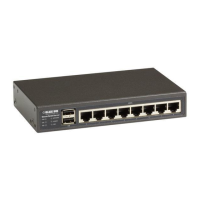
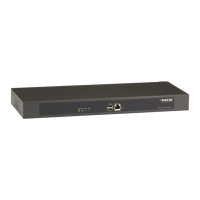
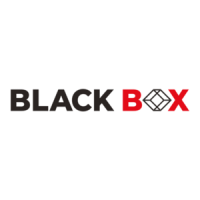

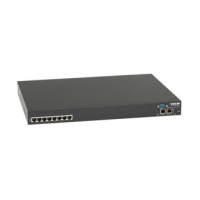
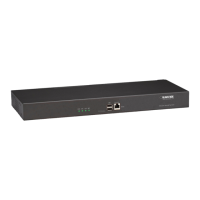


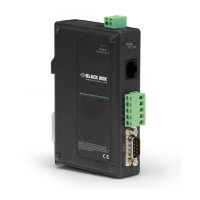
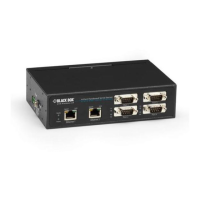
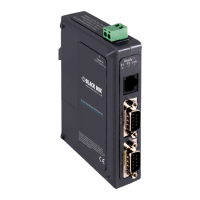
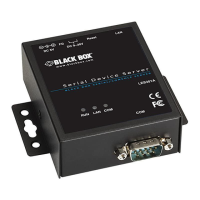
